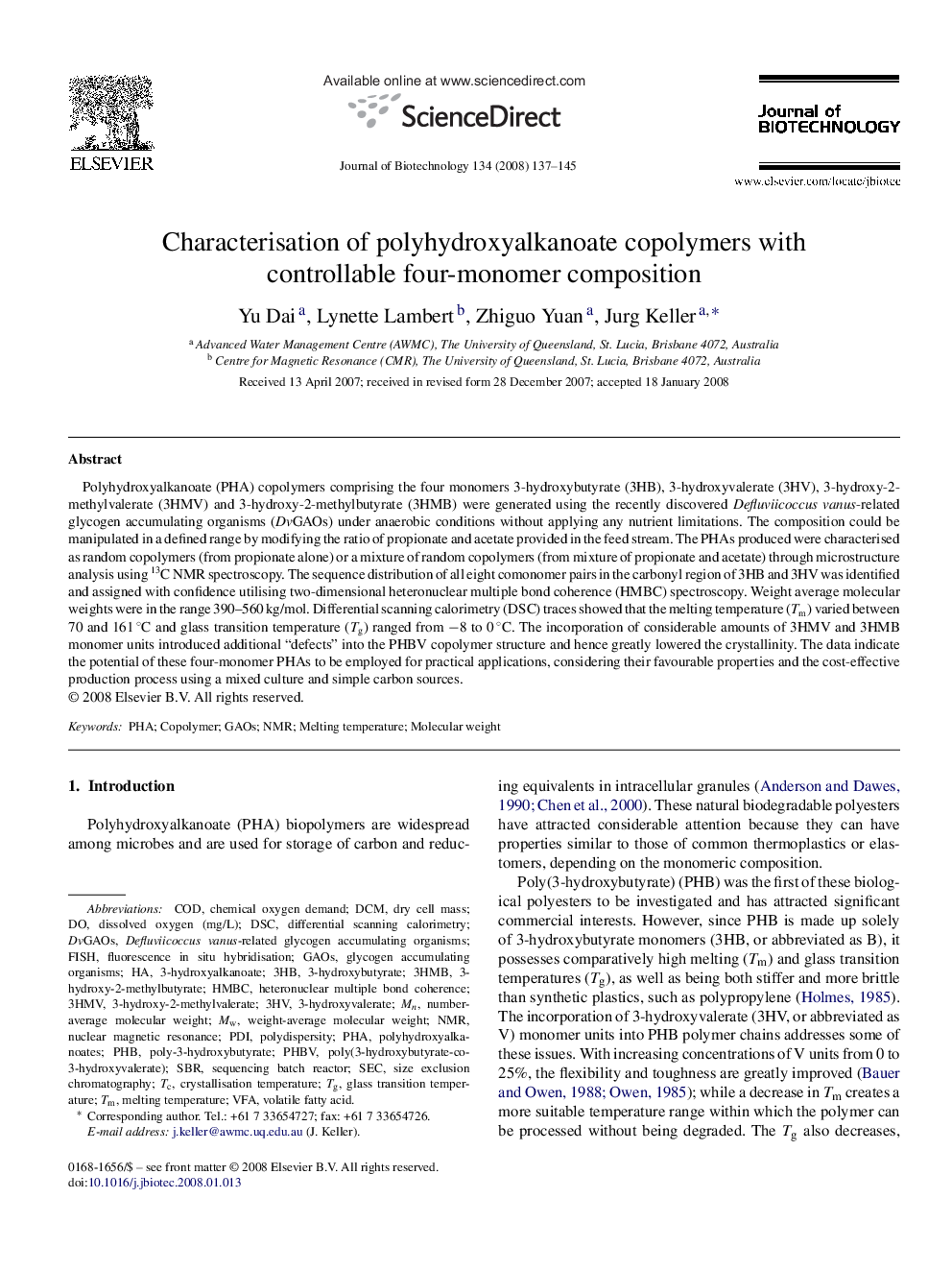| Article ID | Journal | Published Year | Pages | File Type |
|---|---|---|---|---|
| 24857 | Journal of Biotechnology | 2008 | 9 Pages |
Polyhydroxyalkanoate (PHA) copolymers comprising the four monomers 3-hydroxybutyrate (3HB), 3-hydroxyvalerate (3HV), 3-hydroxy-2-methylvalerate (3HMV) and 3-hydroxy-2-methylbutyrate (3HMB) were generated using the recently discovered Defluviicoccus vanus-related glycogen accumulating organisms (DvGAOs) under anaerobic conditions without applying any nutrient limitations. The composition could be manipulated in a defined range by modifying the ratio of propionate and acetate provided in the feed stream. The PHAs produced were characterised as random copolymers (from propionate alone) or a mixture of random copolymers (from mixture of propionate and acetate) through microstructure analysis using 13C NMR spectroscopy. The sequence distribution of all eight comonomer pairs in the carbonyl region of 3HB and 3HV was identified and assigned with confidence utilising two-dimensional heteronuclear multiple bond coherence (HMBC) spectroscopy. Weight average molecular weights were in the range 390–560 kg/mol. Differential scanning calorimetry (DSC) traces showed that the melting temperature (Tm) varied between 70 and 161 °C and glass transition temperature (Tg) ranged from −8 to 0 °C. The incorporation of considerable amounts of 3HMV and 3HMB monomer units introduced additional “defects” into the PHBV copolymer structure and hence greatly lowered the crystallinity. The data indicate the potential of these four-monomer PHAs to be employed for practical applications, considering their favourable properties and the cost-effective production process using a mixed culture and simple carbon sources.
